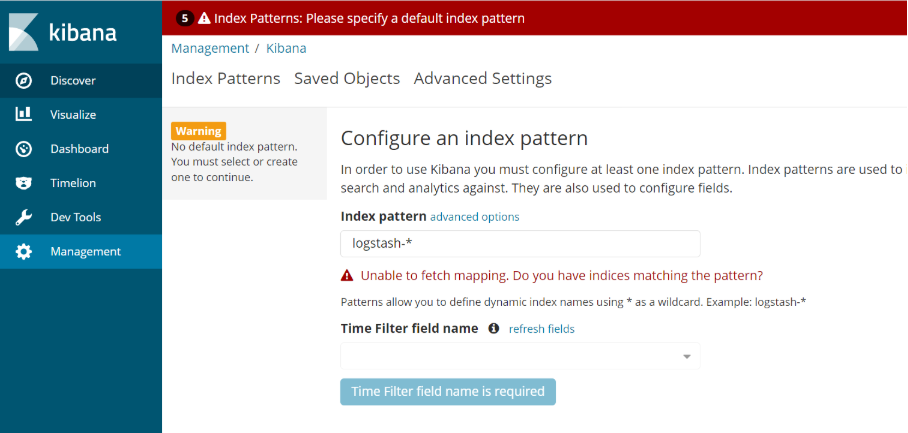ansible部署
ELK常见架构
(1)Elasticsearch+Logstash+Kibana:这种架构是最常见的一种,也是最简单的一种架构,这种架构通过Logstash收集日志,运用Elasticsearch分析日志,最后通过Kibana中展示日志信息。
- Elasticsearch:是一个开源分布式搜索引擎,它提供存储、分析、搜索功能。有分布式、基于reasful风格、支持海量高并发的准实时搜索场景、稳定、可靠、快速、使用方便等特点。其作用是接收搜集海量结构化日志数据,并提供给Kibana查询分析。
- Logstash:是一个开源日志搜集、分析、过滤框架,支持多种数据输入输出方式。 它用于收集日志,对日志进行过滤形成结构化数据,并转发到Elasticsearch中。
- Kibana:是一个开源日志报表系统,对Elasticsearch以及Logstash有良好的Web页面支持。它能对Elasticsearch提供的数据进行分析展示。
(2)Elasticsearch+Logstash+Filebeat+Kibana:在这种架构中增加了一个Filebeat模块。这个模块在上面的内容中没有对它详细介绍,它是一款轻量的日志收集代理,用来部署在客户端中。这个服务较Logstash来说能够节省资源,一般在生产环境中大多采用这种架构,但是这种架构有一个弊端,那就是当Logstash出现故障后,会造成日志的丢失。
(3)Elasticsearch+Logstash+lebeat+Redis(及其他中间件)+Kibana:这种架构等于是上面第二种的完善,通过增加中间件避免数据丢失,当Logstash出现故障后,日志依旧留存在中间件内,当Logstash再次启动,则会读取中间件中积压的日志。在出现“too many open files”报错的时候,大多数情况是由于程序没有正常关闭一些资源引起的,所以出现这种情况时需要检查I/O读写、socket通讯等是否正常关闭等。当然也可以通过修改参数,将系统的文件句柄限制提高,来缓解这一压力。
ELK部署
系统环境:VMware创建的centos7.9虚拟机
节点信息如下:
| 节点 | IP |
|---|---|
| ansible | 192.168.200.80 |
| node1 | 192.168.200.81 |
| node2 | 192.168.200.82 |
| node3 | 192.168.200.83 |
环境初始化:
- 修改当前节点主机名为ansible,并修改ansible节点主机映射,命令如下:
[root@localhost ~]# hostnamectl set-hostname ansible
[root@localhost ~]# bash
[root@ansible ~]# cat /etc/hosts
127.0.0.1 localhost localhost.localdomain localhost4 localhost4.localdomain4
::1 localhost localhost.localdomain localhost6 localhost6.localdomain6
192.168.200.80 ansible
192.168.200.81 node1
192.168.200.81 node2
192.168.200.81 node3
- 配置免密访问,虚拟机root用户密码为000000,命令如下:
[root@ansible ~]# ssh-keygen
[root@ansible ~]# ssh-copy-id node1
[root@ansible ~]# ssh-copy-id node2
[root@ansible ~]# ssh-copy-id node3
- 将ansible节点的域名解析文件复制给安装Elasticsearch集群服务的三个节点,命令如下:
[root@ansible ~]# scp /etc/hosts node1:/etc/
[root@ansible ~]# scp /etc/hosts node2:/etc/
[root@ansible ~]# scp /etc/hosts node3:/etc/
- 关闭ansible节点的防火墙和Selinux配置(如已关闭,则不需要操作),命令如下:
[root@ansible ~]# setenforce 0
软件包下载及uum源配置
- 修将提供的Elasticsearch、Kibana以及Logstash软件包下载至ansible节点/root目录下,并将相应服务的软件包拷贝至不同节点。
[root@ansible ~]# curl -O http://mirrors.douxuedu.com/competition/Ansible.tar.gz
[root@ansible ~]# tar -zxvf Ansible.tar.gz
- 将Elasticsearch软件包拷贝至三个节点,将Kibana软件包拷贝至node1节点,将Logstash软件包拷贝至node2节点,命令如下:
[root@ansible ~]# scp elasticsearch-6.0.0.rpm node1:/root/
[root@ansible ~]# scp elasticsearch-6.0.0.rpm node2:/root/
[root@ansible ~]# scp elasticsearch-6.0.0.rpm node3:/root/
[root@ansible ~]# scp kibana-6.0.0-x86_64.rpm node1:/root/
[root@ansible ~]# scp kibana-6.0.0-x86_64.rpm node2:/root/
[root@ansible ~]# scp kibana-6.0.0-x86_64.rpm node3:/root/
[root@ansible ~]# scp logstash-6.0.0.rpm node1:/root/
[root@ansible ~]# scp logstash-6.0.0.rpm node2:/root/
[root@ansible ~]# scp logstash-6.0.0.rpm node3:/root/
- 将软件包ansible.tar.gz上传至ansible节点配置本地yum源,并安装Ansible:
[root@ansible ~]# tar -zxvf ansible.tar.gz -C /opt/
[root@ansible ~]# mv /etc/yum.repos.d/* /media/
[root@ansible ~]# vi /etc/yum.repos.d/local.repo
[ansible]
name=ansible
baseurl=file:///opt/ansible
gpgcheck=0
enabled=1
[root@ansible ~]# yum -y install ansible
- 配置Ansible主机映射
[root@ansible ~]# mkdir example
[root@ansible ~]# cd example
[root@ansible example]# vi /etc/ansible/hosts
[node1]
192.168.200.81
[node2]
192.168.200.82
[node3]
192.168.200.83
使用CentOS-7-x86_64-DVD-2009.iso镜像文件作为仓库源,将镜像挂载至/opt/centos,编写yum源文件,安装vsftpd服务,用于给远程主机安装Java。命令如下:
[root@ansible example]# curl -O http://mirrors.douxuedu.com/competition/CentOS-7-x86_64-DVD-2009.iso
[root@ansible example]# mkdir /opt/centos
[root@ansible example]# mount CentOS-7-x86_64-DVD-2009.iso /opt/centos/
[root@ansible example]# vi /etc/yum.repos.d/local.repo
[ansible]
name=ansible
baseurl=file:///opt/ansible
gpgcheck=0
enabled=1
[centos]
name=centos
baseurl=file:///opt/centos
gpgcheck=0
enabled=1
[root@ansible example]# yum install -y vsftpd
[root@ansible example]# vi /etc/vsftpd/vsftpd.conf
anon_root=/opt
[root@ansible example]# systemctl restart vsftpd
[root@ansible example]# vi ftp.repo
[centos]
name=centos
baseurl=ftp://192.168.200.80/centos/
gpgcheck=0
enabled=1
安装Elasticsearch获取配置文件
- 安装Elasticsearch服务并编写node1节点配置文件,命令如下:
[root@ansible example]# rpm -ivh /root/elasticsearch-6.0.0.rpm
[root@ansible example]# cp -rf /etc/elasticsearch/elasticsearch.yml elk1.yml
[root@ansible example]# cat elk1.yml | grep -Ev "^$|^#"
cluster.name: ELK
node.name: node1
node.master: true
node.data: false
path.data: /var/lib/elasticsearch
path.logs: /var/log/elasticsearch
network.host: 192.168.200.81
http.port: 9200
discovery.zen.ping.unicast.hosts: ["node1","node2","node3"]
- 编写node2节点配置文件,命令如下:
[root@ansible example]# cp elk1.yml elk2.yml
[root@ansible example]# cat elk2.yml | grep -Ev "^$|^#"
cluster.name: ELK
node.name: node2
node.master: false
node.data: true
path.data: /var/lib/elasticsearch
path.logs: /var/log/elasticsearch
network.host: 192.168.200.82
http.port: 9200
discovery.zen.ping.unicast.hosts: ["node1","node2","node3"]
- 编写node3节点配置文件,命令如下:
[root@ansible example]# cp elk1.yml elk3.yml
[root@ansible example]# cat elk3.yml | grep -Ev "^$|^#"
cluster.name: ELK
node.name: node3
node.master: false
node.data: true
path.data: /var/lib/elasticsearch
path.logs: /var/log/elasticsearch
network.host: 192.168.200.83
http.port: 9200
discovery.zen.ping.unicast.hosts: ["node1","node2","node3"]
安装Kibana获取配置文件
- 安装Kibana服务并编写配置文件,命令如下:
[root@ansible example]# rpm -ivh /root/kibana-6.0.0-x86_64.rpm
[root@ansible example]# cp -rf /etc/kibana/kibana.yml .
[root@ansible example]# cat kibana.yml |grep -v ^#
server.port: 5601
server.host: "192.168.200.81"
elasticsearch.url: "http://192.168.200.81:9200"
安装Logstash获取配置文件
- 安装Logstash服务并获取配置文件,命令如下:
[root@ansible example]# rpm -ivh /root/logstash-6.0.0.rpm
[root@ansible example]# cp -rf /etc/logstash/logstash.yml .
[root@ansible example]# vi logstash.yml
http.host: "192.168.200.82"
- 新建日志输出文件,内容如下:
[root@ansible example]# vi syslog.conf
input {
file {
path => "/var/log/messages"
type => "systemlog"
start_position => "beginning"
stat_interval => "3"
}
}
output {
if [type] == "systemlog" {
elasticsearch {
hosts => ["192.168.200.81:9200"]
index => "system-log-%{+YYYY.MM.dd}"
}
}
}
编写剧本文件
- 安编写Playbook剧本文件,命令如下:
[root@ansible example]# vi cscc_install.yaml
- hosts: all
remote_user: root
tasks:
- name: rm repo
shell: rm -rf /etc/yum.repos.d/*
- name: copy repo
copy: src=ftp.repo dest=/etc/yum.repos.d/
- name: install java
shell: yum -y install java-1.8.0-*
- name: install elk
shell: rpm -ivh elasticsearch-6.0.0.rpm
- hosts: node1
remote_user: root
tasks:
- name: copy config
copy: src=elk1.yml dest=/etc/elasticsearch/elasticsearch.yml
- name: daemon-reload
shell: systemctl daemon-reload
- name: start elk
shell: systemctl start elasticsearch && systemctl enable elasticsearch
- name: install kibana
shell: rpm -ivh kibana-6.0.0-x86_64.rpm
- name: copy config
template: src=kibana.yml dest=/etc/kibana/kibana.yml
- name: start kibana
shell: systemctl start kibana && systemctl enable kibana
- hosts: node2
remote_user: root
tasks:
- name: copy config
copy: src=elk2.yml dest=/etc/elasticsearch/elasticsearch.yml
- name: daemon-reload
shell: systemctl daemon-reload
- name: start elk
shell: systemctl start elasticsearch && systemctl enable elasticsearch
- name: install logstash
shell: rpm -ivh logstash-6.0.0.rpm
- name: copy config
copy: src=logstash.yml dest=/etc/logstash/logstash.yml
- name: copy config
copy: src=syslog.conf dest=/etc/logstash/conf.d/syslog.conf
- hosts: node3
remote_user: root
tasks:
- name: copy config
copy: src=elk3.yml dest=/etc/elasticsearch/elasticsearch.yml
- name: daemon-reload
shell: systemctl daemon-reload
- name: start elk
shell: systemctl start elasticsearch && systemctl enable elasticsearch
- 执行Playbook完成ELK集群的部署,命令如下:
[root@ansible example]# ansible-playbook cscc_install.yaml
浏览器界面访问node1节点5601端口,http://192.168.200.81:5601
